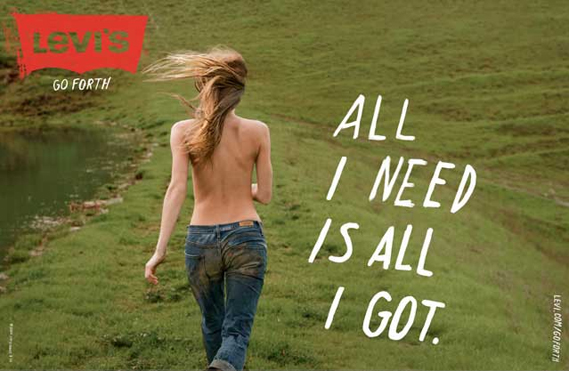
Bitch, you also need a shirt.
If you’ve recently been to a movie targeted at 18- to 34-year-olds—Zombieland, say, or Couples Retreat, which are basically the same movie when you think about it—you’ve probably seen thew new “Go Forth” line of Levi’s commercials. The campaign involves a variety of spots for film, print and television, but the one I like best opens on a flickering neon sign half-submerged in floodwater. The sign reads, of course, “America,” and the ad proceeds—over a wax-cylinder recording of Walt Whitman reading his famous poem of the same name—to show us a series of slums, riots and scenes of rural poverty, intercut with shots of dirty children/manchildren running around in blue jeans, ending with the gunshot crack of fireworks and the admonition, “Go forth.” As usual, by “like best” I mean “am most disturbed by.” Video after the break:

